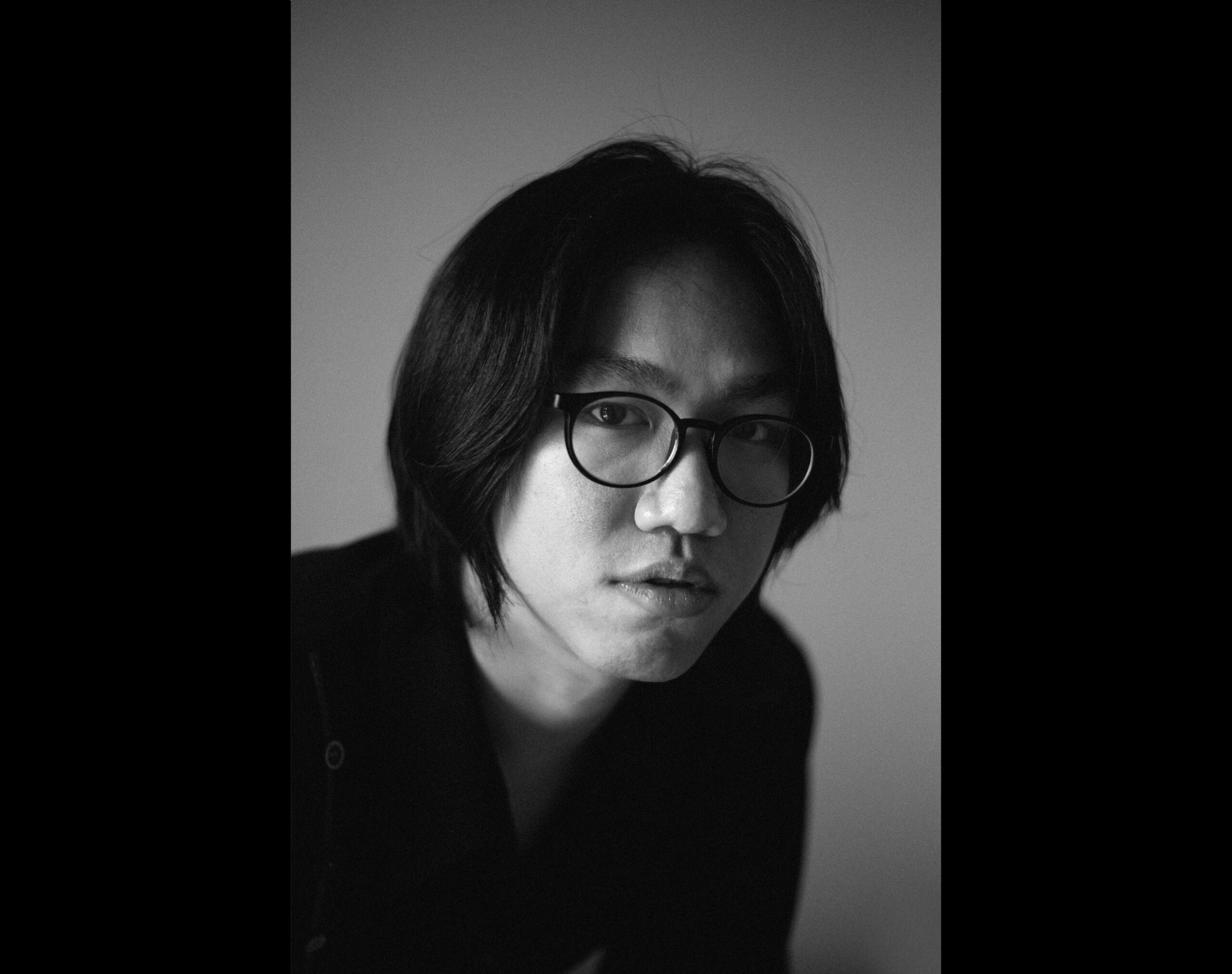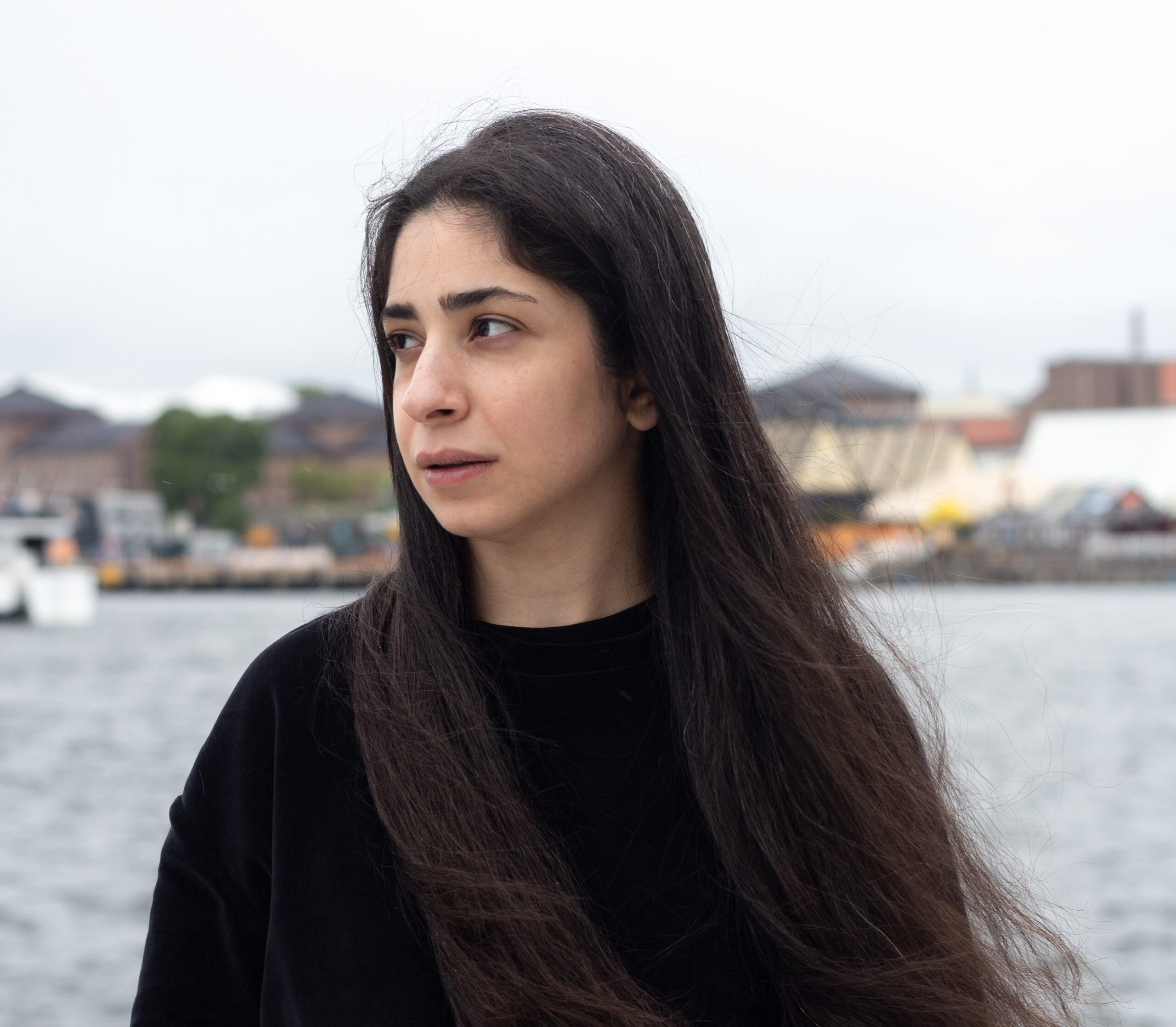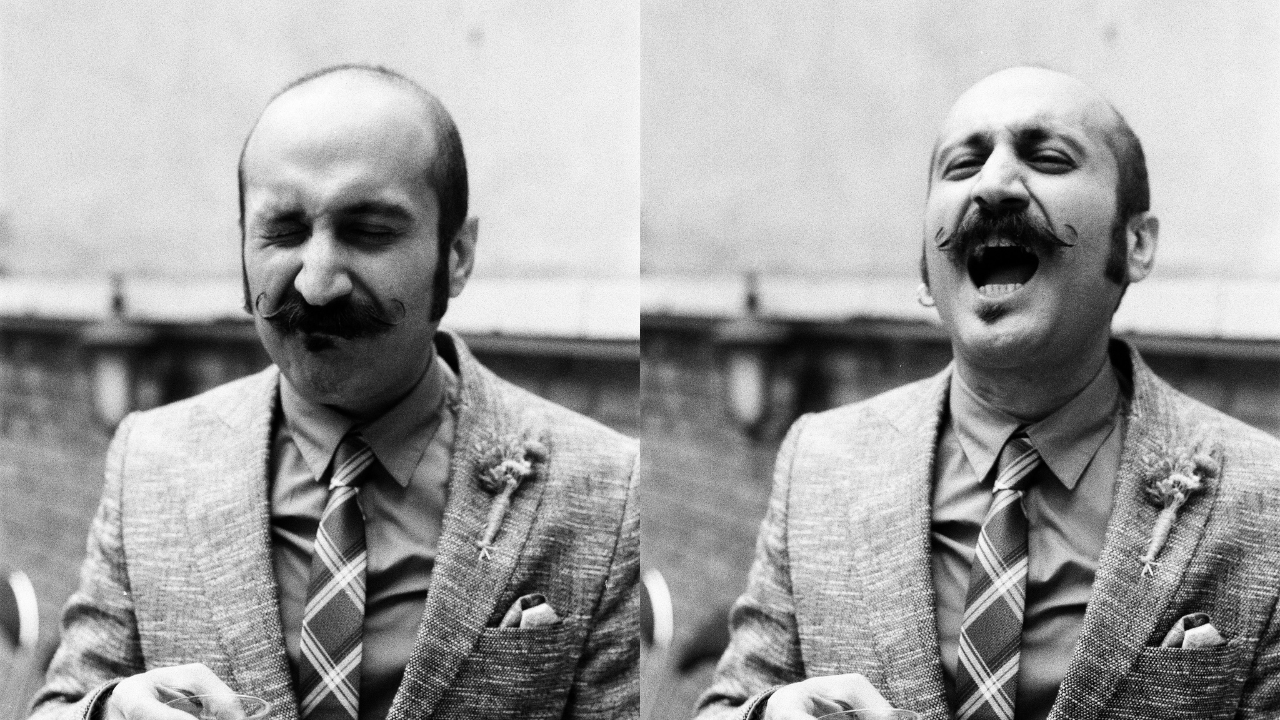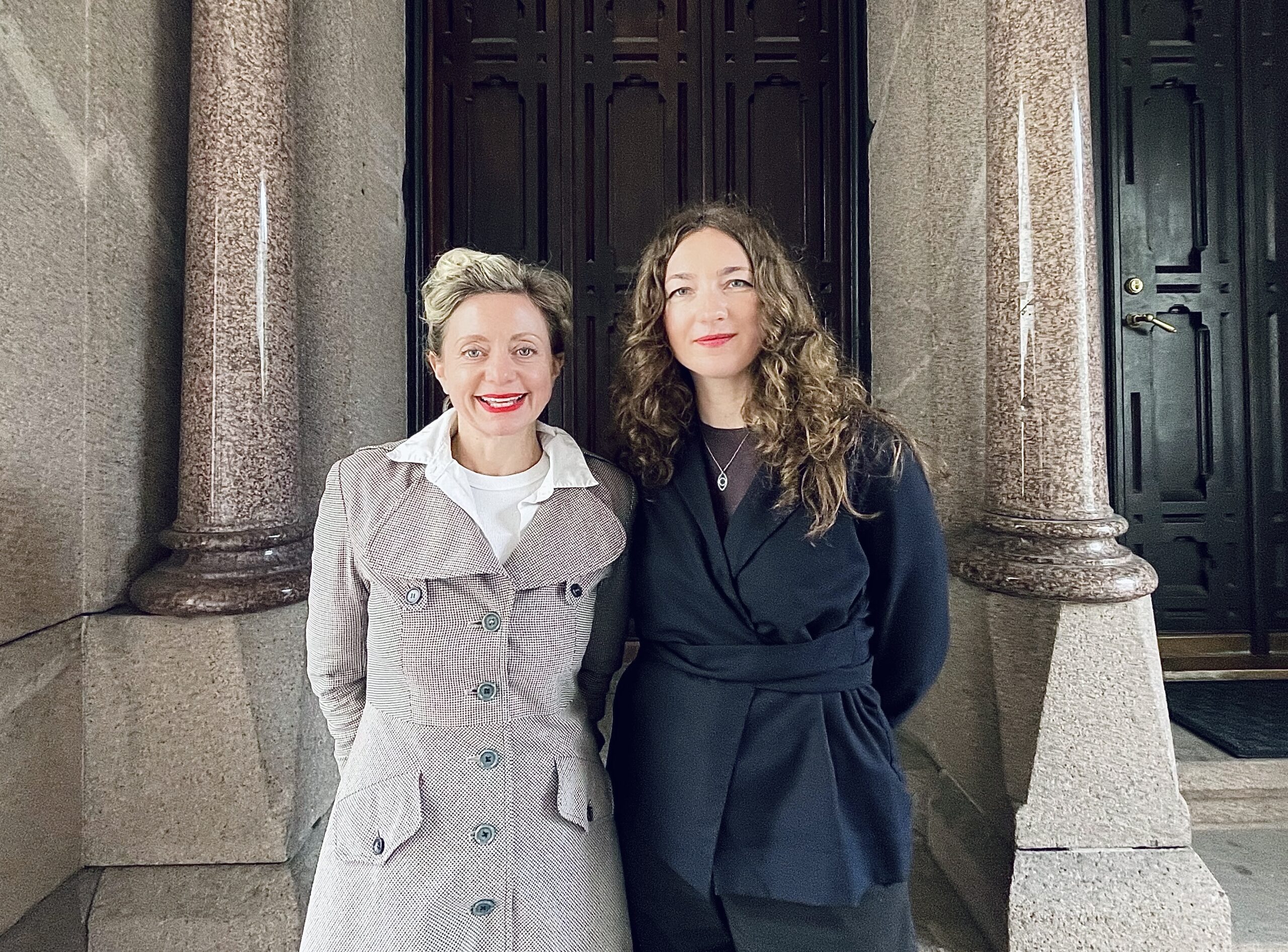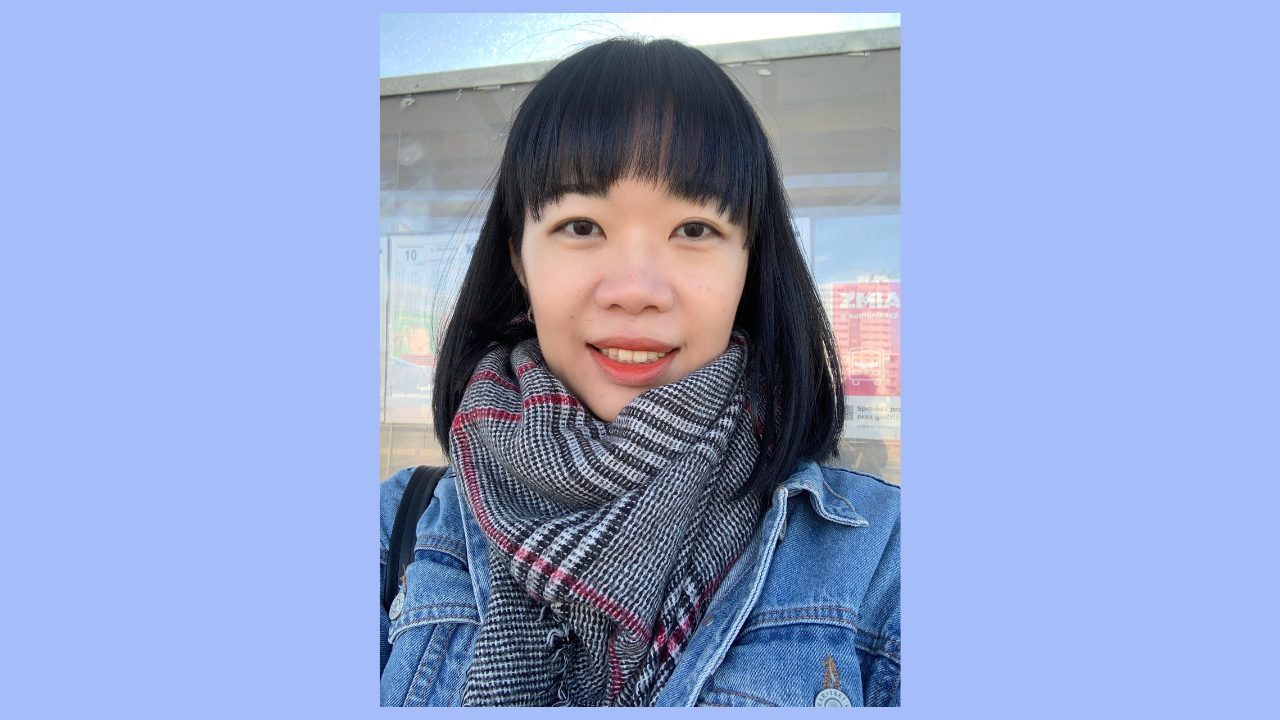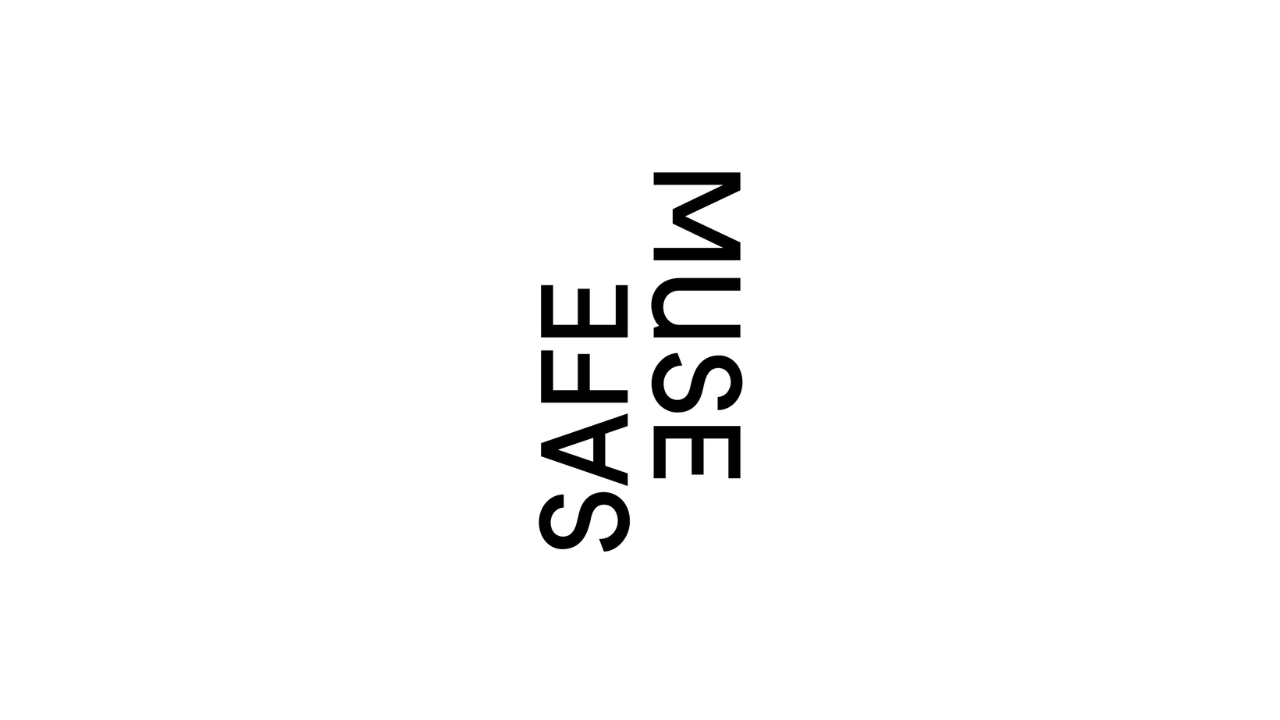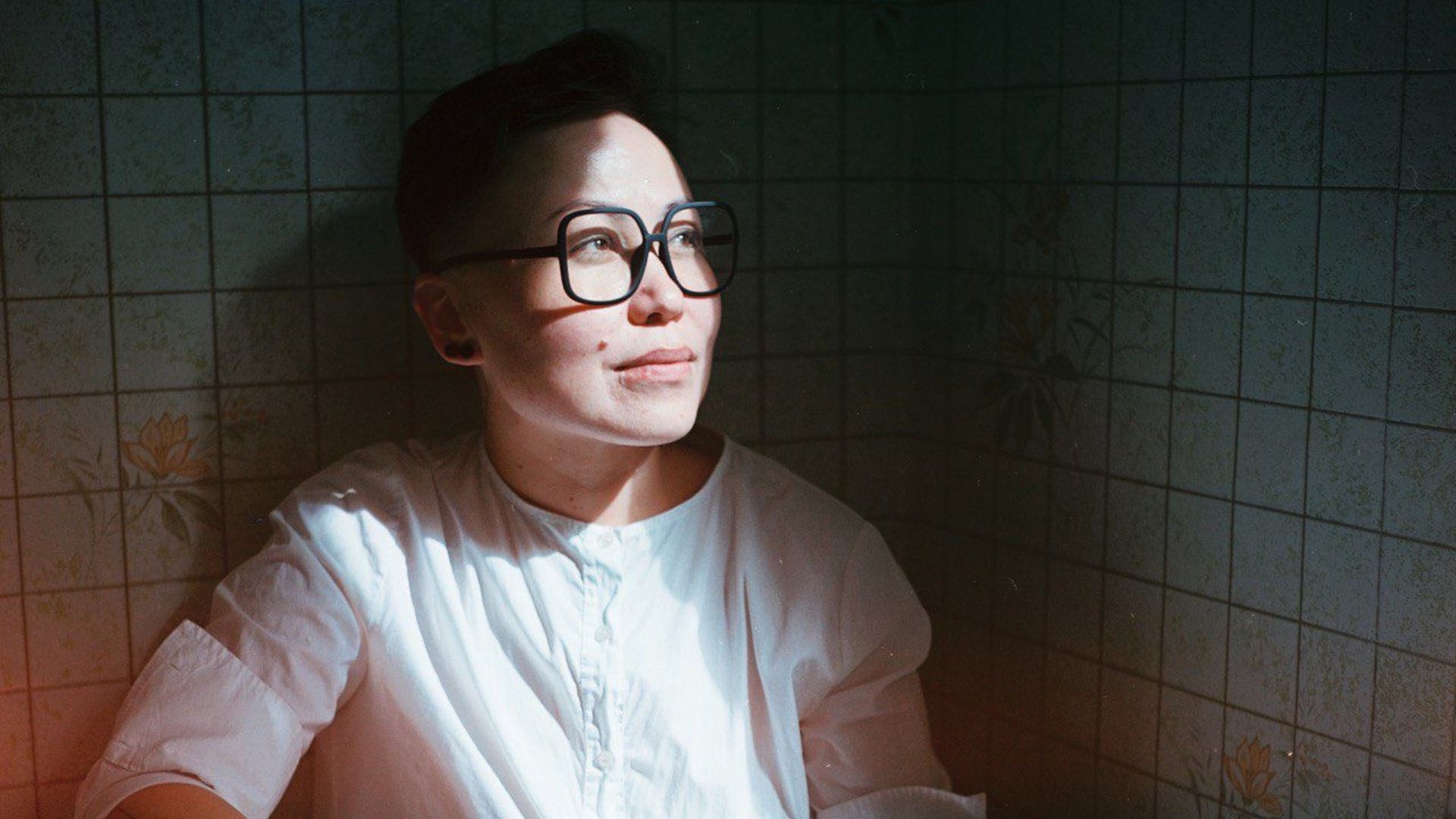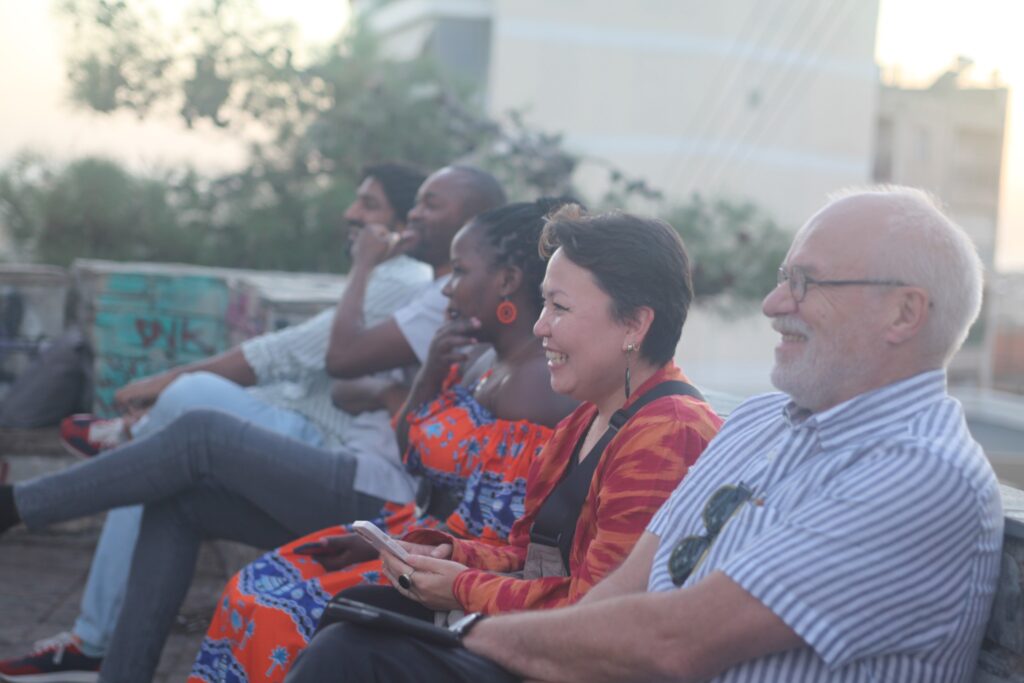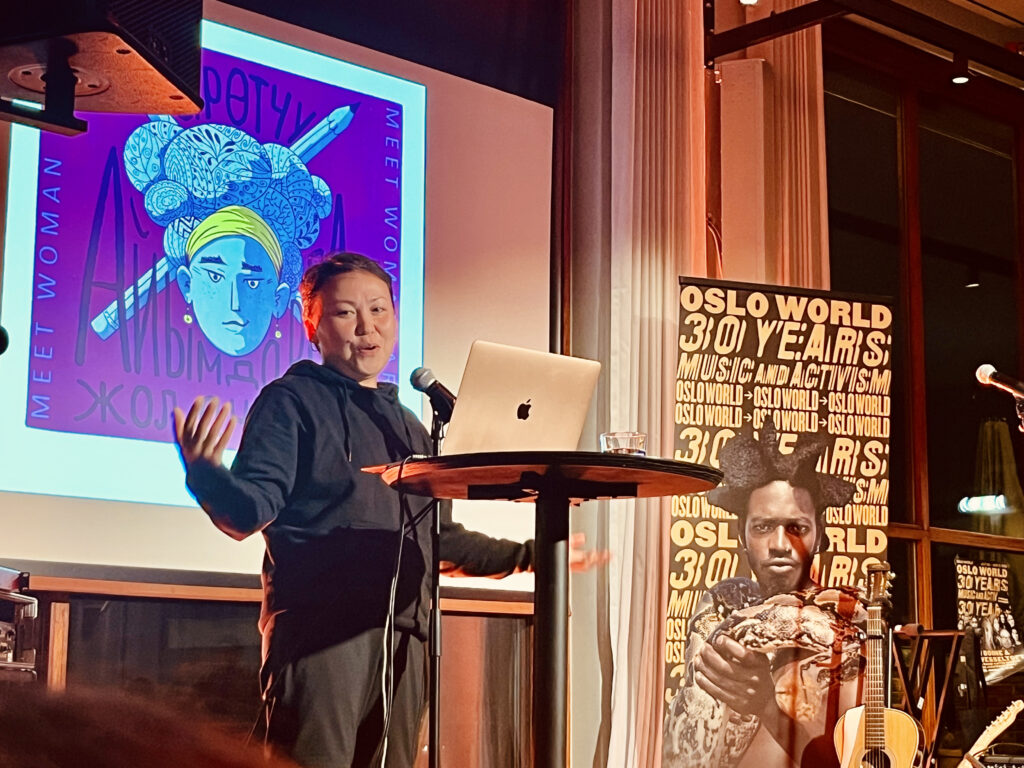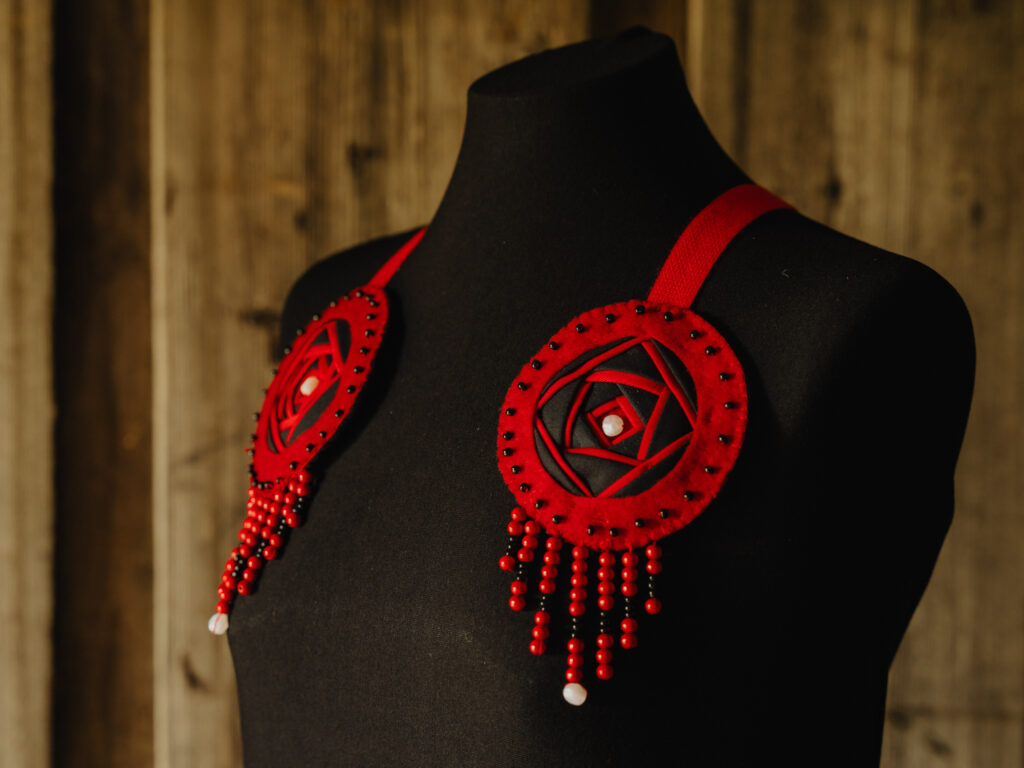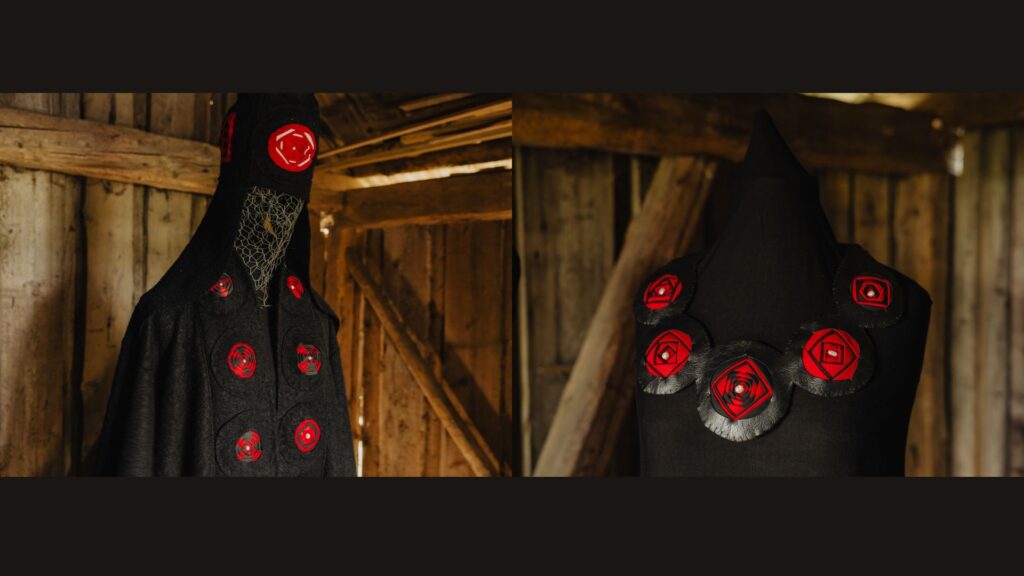"The Common Enemy"
- Violations Against Metal Bands: Reasons Beyond Religion
Written by Nikan Khosravi, intern in Safemuse and founding member of the band Confess

Interlude: Why This Matters to Me
As the frontman of Confess, an Iranian metal band that has lived through the harsh realities of censorship and persecution, this article is not just a matter of academic interest—it’s deeply personal. I know firsthand what it means to be punished for creating art that challenges authority. In 2015, my bandmates and I were arrested, tortured, and imprisoned under charges of blasphemy and “insulting the sacred,” simply for playing heavy metal. We faced 14 years in prison and 74 lashes, all because our music dared to question the oppressive theocratic regime that governs Iran.
I wrote this article because the fight for artistic freedom is not limited to any one country or ideology—it’s a global issue. As a metal musician, I’ve seen how this genre, which thrives on rebellion and resistance, becomes a target wherever governments and religious institutions feel threatened. Metal gives a voice to those who are often silenced, and for that, it becomes a “common enemy” in places where expression is tightly controlled.
Metal Against Oppression: The Global Struggle for Freedom of Expression
The struggles of metal bands in Poland, Iran, Egypt, Indonesia, and beyond share a common thread: the power of music to speak truth to power. My story is just one example of how far governments will go to silence those who use art to criticize and provoke thought. But for every artist silenced, there are countless others who continue to fight back, using metal as their weapon of choice. This article is my way of highlighting that struggle and standing in solidarity with every artist facing persecution simply for daring to be heard.
Heavy metal has always been the sound of the outsiders. From Black Sabbath, who emerged from the industrial outskirts of Birmingham in the late 1960s; to the young San Franciscans who called themselves Metallica, who took metal to new heights in the ’80s; and the nine-piece masked band from Iowa, Slipknot, who introduced a new level of rage to the genre (Bowar, 2019).
From the very beginning, metal music has served as an outlet for young people to express their frustration and pain in navigating the modern world, giving voice to their anger and raw emotions. It has been used to criticize politicians, rage against religion, and challenge preachers. As technology advanced, this music transcended borders, spreading to different regions worldwide. It is safe to say that, today, metal music is an international genre, rivaling pop and rap in reach. In every corner of the globe, metal artists blend their own cultural influences with this powerful genre. Over the years, various musical styles have been fused with metal. Some prime examples include samba music, as performed by Sepultura from Brazil, and folk, as infused by System of A Down (Lawson, 2016).
Heavy metal music is known for its loud, aggressive sound and rebellious spirit and it has long been a genre associated with rebellion, counterculture, and pushing societal boundaries. While metal’s aggressive sound and controversial themes make it a magnet for censorship and persecution globally, the intensity of these crackdowns varies depending on cultural, religious, and political contexts. Metal bands, often seen as subversive, are targeted in countries where strict religious or authoritarian values prevail. This struggle goes beyond music, touching on larger issues of freedom of speech, artistic expression, and resistance against state control. This is true from The United States to Asia.
This article takes a closer look at some of these countries, exploring specific examples to understand why metal music has become a common enemy for these governments when it comes to artistic freedom of expression and how metal musicians can become scapegoats for broader cultural and religious conflicts.
1. Poland: Metal and the Fight for Religious Tolerance
Poland, a predominantly Catholic country, has a complicated relationship with heavy metal due to its deeply entrenched religious values. The nation has seen metal bands clash with the legal system, particularly through the enforcement of blasphemy laws (Wądołowska 2021), which make it illegal to insult religious beliefs. These laws are part of a broader effort by conservative political factions to protect Poland’s Catholic identity.
Behemoth, arguably Poland’s most internationally recognized extreme metal band, has repeatedly found itself at the center of these legal battles (Houston, 2014). Frontman Adam “Nergal” Darski was charged with blasphemy in 2014 for tearing up a Bible on stage and calling the Catholic Church “the most murderous cult on the planet.” (Pasbani, 2011). Although Nergal was acquitted, his case sparked national debates about freedom of expression versus the protection of religious sentiment. Behemoth’s continued performances, laden with anti-religious imagery, keep the controversy alive.
In Poland, artists can face legal charges for offending religious beliefs under the country’s blasphemy laws. Punishments often include fines, court trials, and community service rather than imprisonment.
Religious leaders and conservative politicians argue that such performances disrespect Poland’s religious heritage and threaten the moral fabric of society. However, metal fans and free speech advocates view these laws as a violation of personal liberties and an attempt to stifle dissenting voices. Poland’s fight over metal music reflects deeper tensions about the role of religion in public life and how much freedom of expression should be allowed in a democratic society.

2. Iran: Metal as a Challenge to Theocracy
In Iran, metal bands face even harsher treatment due to theocratic laws that view this genre as a threat to Islamic values. (Krovatin, 2019) Since the 1979 revolution, any form of music seen as promoting Western decadence is heavily censored. (Askew, 2022)
A prime example was when my bandmate Arash and I were arrested by the Revolutionary Guard in Tehran in October 2015 and taken to Evin prison, where we were held for almost a year and a half. The arrest was based on multiple charges, two of the main ones being blasphemy and propagating against the state. During the interrogations, which continued while we were held in solitary confinement for three months, we were questioned about our relationships with entities outside the country, under suspicion of spying, and about the motivation behind writing anti-establishment and anti-religious lyrics. After the first trial sentenced each of us to six years in prison, I left Iran. After spending some time in Turkey, I moved to Norway in December 2018 and continued my work. Later, in July 2019, the appeal court increased my sentence to 12 years and 6 months in prison, along with 74 lashes. (Mills, 2022)
In Iran, metal musicians face some of the harshest penalties. Charges like blasphemy, promoting anti-Islamic sentiment, or anti-state propaganda can result in long prison sentences, flogging, and forced exile.
The Iranian government frames these crackdowns as necessary to uphold Islamic values and prevent moral decay. Metal, in their eyes, promotes Western decadence and encourages youth rebellion against religious authority. For metal musicians in Iran, the choice is often exile or imprisonment, as the state continues to view cultural resistance as a form of political dissent.

3. Egypt: The Stigma of Satanism and Social Repression
In Egypt, metal music has long been stigmatized as being associated with Satanism, immorality, and social deviance. (Tewfik, N. Nasr, N. 2016) This perception came to a head in 1997 when authorities launched a wave of arrests targeting metal fans and musicians, accusing them of participating in “Satanic rituals.” (Charbel, 2010) The government justified these raids as a means of protecting society from dangerous foreign influences.
In Egypt, musicians are often arrested on accusations of promoting Satanism or immoral behavior, with punishments including arrest, detention without trial, and public defamation.
Although like Iran, metal is not explicitly banned, Egyptian metal bands face severe societal and governmental opposition. Female-fronted bands like Massive Scar Era have used the genre to confront issues such as gender inequality, but they must often perform abroad to escape the restrictions placed on their music at home. The conservative social climate in Egypt, combined with a government eager to suppress anything that might challenge its authority, makes metal a risky form of expression.
In explaining their actions, Egyptian authorities and conservative religious figures claim that metal music is a corrupting influence on youth, often linking it to Satanism and moral decay. In reality, much of the repression stems from fears that metal bands, with their rebellious lyrics and alternative lifestyles, could inspire broader resistance to the status quo.
4. Indonesia: Metal Against Religious Intolerance
Indonesia, home to the world’s largest Muslim population, has a thriving metal scene, but bands often find themselves at odds with religious and government authorities. In provinces like Aceh, where Sharia law is enforced, metal music is viewed as a symbol of rebellion against Islamic values. (James & Walsh, 2019) In 2013, the government detained 64 punks in Aceh and forcibly shaved their heads as part of a “moral crackdown” on metal and punk communities, accusing them of undermining religious principles. (Curran, 2011)
Bands like Burgerkill, one of Indonesia’s most prominent metal acts, continue to face pressure from both the state and conservative Islamic groups. Despite these challenges, the metal scene remains resilient, serving as a voice for countercultural and political dissent. Metal musicians in Indonesia are often vocal critics of corruption, inequality, and religious intolerance, which puts them at odds with a government eager to maintain social order.
The Indonesian government and conservative religious groups often justify their actions by claiming that metal promotes “immoral” behavior and Western decadence. However, for many young Indonesians, metal offers an outlet for expressing dissatisfaction with the rigid norms of their society.
In conservative regions of Indonesia, metal musicians and fans may face arrests during raids, followed by detention, forced shaving (symbolizing moral cleansing), and in some cases, enforced participation in religious re-education programs.
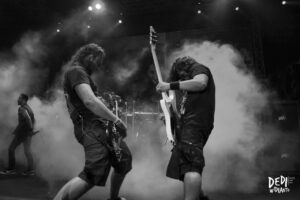
5. Saudi Arabia: Metal as a Form of Rebellion in a Conservative Monarchy
In Saudi Arabia, one of the world’s most conservative Islamic nations, metal musicians face serious risks. The kingdom’s strict interpretation of Islamic law leaves little room for musical expression (Zaghdoudi, 2024) that deviates from the norm, and metal is often associated with blasphemy and immoral behavior. Underground metal bands, like Al-Namrood, (Chester, 2015) operate in secrecy to avoid arrest. The band members have remained anonymous for their own safety as they defy Saudi Arabia’s religious and political establishment through their music.
The Saudi government views metal as an affront to Islamic values and public morality, and metal musicians risk severe punishment, including imprisonment or even flogging, if caught. Yet, despite the risks, underground metal continues to grow, providing a form of resistance for young Saudis seeking to rebel against the country’s oppressive regime.
In Saudi Arabia, underground metal musicians risk severe punishment, including imprisonment and flogging, and Execution if they are caught. The country’s strict Sharia law views metal as a threat to religious morality and public order.
Violations Against Metal Bands: Reasons Beyond Religion
Metal bands have faced violations, censorship, and backlash for various reasons beyond just religious opposition. Here are some key factors that contribute to this:
1. Cultural Misunderstandings:
Metal music often incorporates dark themes, graphic imagery, and intense performances, which can be misinterpreted by those unfamiliar with the genre. For example, black metal, one of the most extreme sub-genres, is known for its use of “corpse paint” (Bhagwandas, 2024)—a type of theatrical makeup that creates a ghostly, death-like appearance. This aesthetic, along with the genre’s dark themes, is sometimes wrongly associated with satanic worship. The imagery is often intended for dramatic effect rather than literal worship, but it can still provoke backlash from conservative communities.
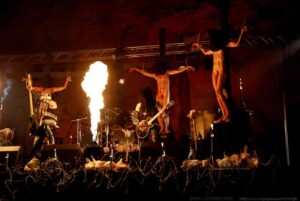
2. Political Views:
Many metal bands voice strong political opinions, often challenging authority and addressing issues like war, corruption, and social injustice. This can result in censorship or even bans, especially in authoritarian regimes. For instance, Rage Against the Machine’s anti-establishment messages led to a temporary ban of their music from US radio stations following the September 11 attacks. (Sharp, 2024) Similarly, bands like Megadeth and Lamb of God have faced scrutiny for their politically charged lyrics.
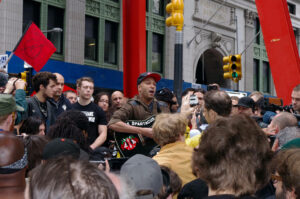
3. Social Stigmas:
Metal music and its subcultures are frequently stigmatized by society, often being associated with violence, rebellion, or anti-social behavior. A notable example is the aftermath of the 1999 Columbine High School shooting in the United States, where the media blamed Marilyn Manson’s music for influencing the shooters. (Brannigan, 2020) Despite there being no evidence to support this claim, the controversy surrounding his music persisted.

4. Lyrical Content:
Lyrics that deal with themes like violence, drugs, or other controversial topics can provoke backlash. Parents, the media, or law enforcement may view such content as harmful or inappropriate. For example, Dee Snider of Twisted Sister was called to testify before the U.S. Congress in 1985, defending the band’s hit song “We’re Not Gonna Take It” against claims that it promoted violence. (Grow, 2015) Similarly, Cannibal Corpse has faced criticism from politicians like Senator Bob Dole, who accused the band of undermining American values with their graphic lyrics. (Gold, 1995)
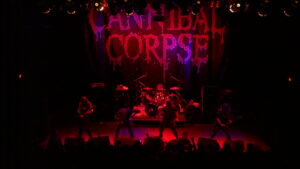
5. Historical Context:
In some regions, metal music has been tied to countercultures or social movements that authorities view as subversive. In countries like Egypt and Iran, metal and rock are often seen as part of a Western agenda to corrupt the youth and undermine traditional values. This has led to frequent crackdowns on metal bands, concerts, and even fans in these regions, where authorities equate the genre with rebellion against societal norms. (Pace, 2005)
6. Racism and Discrimination:
Some metal sub-genres, particularly black metal, have been criticized for harboring racist or neo-Nazi sympathies. (Buesnel, 2020) For example, Varg Vikernes of the Norwegian band Burzum has been outspoken about his far-right views, contributing to the genre’s controversial reputation. (Stratton, 2023) Bands such as Taake, Marduk, and Gorgoroth have also faced backlash for similar reasons, with concerts being cancelled due to allegations of promoting hate speech. (Hohnen, 2023) However, not all black metal bands share these views, and many have publicly distanced themselves from any association with racism or neo-Nazism.
The Limits of Free Speech in Metal
Heavy metal has always prided itself on pushing boundaries, using shock value, controversial lyrics, and extreme imagery to challenge societal norms. However, when does that free expression become harmful, especially when it flirts with hate speech?
Under free speech principles, musicians have the right to express themselves through their art, even if their views or symbolism are controversial. But when those expressions actively promote racism, white supremacy, or violence against certain groups, many argue that it crosses into hate speech, which can be harmful both legally and socially. Some countries, particularly in Europe, have strict hate speech laws, and as a result, concerts by bands accused of neo-Nazi sympathies have been banned or heavily protested.
- In Germany, for instance, hate speech laws prohibit the use of Nazi symbols or propaganda. As a result, bands like Taake and Marduk have faced concert cancellations due to alleged associations with far-right ideologies. (Neilstein, 2018)
- In the U.S., where free speech is more broadly protected under the First Amendment, these issues become more nuanced. While bands may legally express extremist views, they can still face social backlash, boycotts, and venue bans.
This tension between protecting free expression and curbing hate speech is not unique to metal but is particularly charged within this genre, where provocation and extremity are often integral to the music’s identity. The debate continues over whether hate speech within black metal or NSBM should be tolerated as part of free expression or condemned for promoting harmful ideologies.

7. Sexuality and Gender Issues:
Metal has historically been male-dominated, but the rise of female-fronted bands like Arch Enemy, Jinjer, Epica, and Nightwish has challenged traditional gender roles. These bands have achieved international success, proving that metal is no longer a “boys’ club.” The presence of women in metal, both as musicians and fans, is now widely accepted within the community, though certain conservative groups may still view some performances or lyrical content as provocative or immoral. (Burns, 2020)
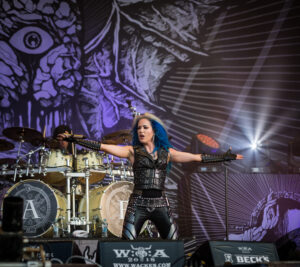
8. Drug Use:
Metal musicians have often been linked to substance abuse, which has led to negative reactions from authorities and the public. The deaths of many prominent rock and metal artists due to drug use (White Sands Treatment 2017) have reinforced the stereotype that metal musicians are heavy drug users, which in turn affects how the genre is perceived. While these associations are often exaggerated, they can still result in restrictions on performances or negative media portrayals. (Cornell, 2018)

9. Violence at Shows:
Metal concerts, like any large gatherings, can sometimes escalate into violence, leading to restrictions or bans on future performances. A famous example is Woodstock ’99, where riots broke out after a chaotic performance by the nu-metal band Limp Bizkit. (Heritage, 2022) Additionally, in 2001, a free surprise concert by System of a Down in Los Angeles was cancelled after thousands of fans rioted when the event drew an unexpectedly large crowd in a residential area of Hollywood. (Everley, 2023)
10. Personal Conduct of Band Members:
Individual band members’ behaviour can also lead to public backlash or legal consequences. For example, Tim Lambesis of As I Lay Dying was arrested in 2013 for attempting to hire a hitman to murder his wife. (Guardian music, 2014) Other artists, such as GG Allin (Dome, 2022) and Axl Rose (Dome, 2022), have also been arrested for violent behaviour. In the early 1990s, members of the Norwegian black metal band Mayhem were involved in the burning of several historic churches in Norway, acts that were seen as symbols of resistance to Christianity and calls for a return to paganism. (Mythic Imagination. 2022) Additionally, In May 1994 Varg “Burzum” Vikernes was found guilty of killing his band member Øystein “Euronymous” Aarseth which has affected their public image and the reputation of their bands. (Darya, 2019)
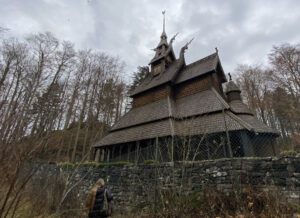
These factors illustrate the complexity of the challenges metal bands face, reflecting broader societal attitudes and conflicts. While the genre often serves as a platform for artistic expression and political dissent, it is also frequently misunderstood, leading to a range of social, legal, and cultural consequences.
What is the future for Metal music?
In conclusion, heavy metal music continues to be a powerful force for artistic expression and cultural rebellion, transcending borders and challenging societal norms. The genre’s ability to give voice to frustrations with authority, religion, and the status quo has made it a target for censorship, persecution, and social stigma in many parts of the world. From Poland to Iran, Egypt, and Indonesia, metal bands have faced legal battles, imprisonment, and societal backlash, reflecting the broader struggles for freedom of expression in these regions.
These attacks on metal music are not merely about the sound or style but are part of a global confrontation between conservative ideologies and artistic freedom. Governments and religious authorities often see metal as a threat to their power, viewing its provocative themes as tools of rebellion. However, metal bands and their fans continue to resist, using music as a platform to confront injustice, push boundaries, and demand the right to express themselves freely.
Ultimately, the global struggle of metal bands in these regions exemplifies the ongoing battle for artistic rights and freedom of expression. As long as repression continues, metal will remain the voice of the outsiders, defying limits imposed by authority and advocating for the rights of the marginalized. The fight for artistic freedom, as illustrated by the stories in this article, is a universal one that transcends borders, proving that the common enemy of censorship is a shared adversary for artists worldwide.
Reference list
– Bowar, C. (2019, August 2). History and Styles of Heavy Metal.
Liveaboutdotcom. https://www.liveabout.com/what-is-heavy-metal-1756179
– Lawson, D. (2016, October 6). The story behind Sepultura’s Roots.
Metal Hammer. https://www.loudersound.com/features/the-story-behind-sepulturas-roots
– Leaver, E. (2023, June 30). HEAVY MUSIC HISTORY: System Of A Down – System Of A Down
Distorted Sound. https://distortedsoundmag.com/heavy-music-history-system-of-a-down-system-of-a-down/
– Wądołowska, A. (2021, March 13). Should Poland abolish its blasphemy law? Five expert views.
Notes From Poland. https://notesfrompoland.com/2021/03/13/should-poland-abolish-its-blasphemy-law-five-expert-views/
– Houston, R. (2014, February 1). The Mighty Behemoth.
HM Magazine. https://metalstorm.net/bands/biography.php?band_id=50&bandname=Behemoth
– Hartmann, G. (2021, February 8). Behemoth’s Nergal Faces Blasphemy Charge for ‘Offending Feelings’.
Loudwire. https://loudwire.com/behemoth-nergal-blasphemy-charge-offending-religious-feelings/
– Pasbani, R. (2011, August 18, 2011). BEHEMOTH’s Nergal Cleared of Bible-Tearing Charges.
Metal Injection. https://metalinjection.net/news/behemoths-nergal-cleared-bibletearing-charges
– Krovatin, C. (2019, September 5). 74 Lashes: What It’s Like To Be A Metal Band In Iran.
Kerrang. https://www.kerrang.com/74-lashes-what-its-like-to-be-a-metal-band-in-iran
– Askew, J. (2022, 26 May). What happened when Iran criminalised music after the 1979 Islamic Revolution?
Euro news. https://www.euronews.com/culture/2022/05/26/what-happens-when-a-country-criminalises-music
– Mills, M. (2022, January 26). ‘I got 12 years and 74 lashes’: Confess, the band jailed for playing metal in Iran.
The Guardian. https://www.theguardian.com/music/2022/jan/26/confess-the-band-jailed-for-playing-metal-in-iran
– Tewfik, N. Nasr, N. (2016, February 26). Egypt’s metal fans divided after fresh satanism accusations.
English Ahram. https://english.ahram.org.eg/NewsContent/5/33/188547/Arts–Culture/Music/Egypts-metal-fans-divided-after-fresh-satanism-acc.aspx
– Charbel, J. (2010, April 23). The ongoing demonization of Egyptian Metalheads.
Egypt Independent. https://www.egyptindependent.com/ongoing-demonization-egyptian-metalheads/
– James, K. Walsh, J. (2019). Religion and heavy metal music in Indonesia.
Cambridge University Press.
https://doi.org/10.1017/S0261143019000102
– Curran, P. (2011, December 4). 64 Indonesian Punks Detained and “Re-educated”.
Maximum rock ‘n roll. https://www.maximumrocknroll.com/64-indonesian-punks-detained-and-re-educated/
– Zaghdoudi, A. (2024, March 24). In Saudi Arabia, no safe harbor for free speech.
Accessnow. https://www.accessnow.org/saudiarabiasafeharbor/
– Chester, N. (2015, April 21). Meet the Saudi Arabian Black Metal Band That’s Breaking Saudi Law By Being a Black Metal Band. Vice. https://www.vice.com/en/article/anti-religious-black-metal-band-in-saudi-arabia-666/
– Bhagwandas, A. (2024, April 6). A short history of how corpse paint became a part of black metal scene….
Anitabhagwandas. https://anitabhagwandas.substack.com/p/a-short-history-of-corpse-paint
– Sharp, T. (2024, September 11). Every Song Radio Stations Were Encouraged to Not Play After 9/11.
Loudwire. https://loudwire.com/every-song-radio-stations-were-encouraged-to-not-play-after-911/
– Brannigan, P. (2020, April 20). Columbine: How Marilyn Manson Became Mainstream Media’s Scapegoat.
Kerrang. https://www.kerrang.com/columbine-how-marilyn-manson-became-mainstream-medias-scapegoat
– Grow, K. (2015, September 18). Dee Snider on PMRC Hearing: ‘I Was a Public Enemy’.
Rolling Stone. https://www.rollingstone.com/music/music-news/dee-snider-on-pmrc-hearing-i-was-a-public-enemy-71205/
– Gold, J. (1995, June 25). GROSS PROFIT: When Sen. Dole Targets Certain Rock Groups, He Just Feeds Their Notoriety.
Los Angeles Times. https://www.latimes.com/archives/la-xpm-1995-06-25-tm-16759-story.html
– Pace, G. (2005, December 19). Iran’s Leader Bans Western Music.
CBS news. https://www.cbsnews.com/news/irans-leader-bans-western-music/
– Buesnel, R. (2020). National Socialist Black Metal: a case study in the longevity of far-right ideologies in heavy metal subcultures. Charles Sturt University.
https://doi.org/10.1080/0031322X.2020.1800987
– Stratton, C. (2023, September 25). Horrific crime Who is Varg Vikernes and how much time did he serve?
The Sun. https://www.thesun.co.uk/news/23710258/varg-vikernes-euronymous-mayhem/
– Hohnen, M. (2023, January 6). Promoters cancel Australia tour of Norwegian metal band Taake, accused of far-right sympathies. The Guardian. https://www.theguardian.com/music/2023/jan/06/promoters-cancel-australia-tour-of-norwegian-metal-band-taake-accused-of-far-right-sympathies
– Burns, L. (2020). Intersections of Gender, Race, and Genre: Cammie Gilbert and Black Female Subjectivity in Metal Music.
AMP American Music Perspectives
https://doi.org/10.5325/ampamermusipers.1.2.0098.
– Berkers, P. & Julian Schaap. (2018). Gender Inequality in Metal Music Production.
Emerald Publishing.
https://doi.org/10.56367/OAG-042-11408
– The Ultimate List of Musicians Lost to Drugs. (2017). https://whitesandstreatment.com/infographics/the-ultimate-list-of-musicians-lost-to-drugs/
– Cornell, J. (2018, December 19). New Study Reveals Concert Substance Abuse Stats of Metal Fans.
Loudwire. https://loudwire.com/new-study-concert-substance-abuse-stats-metal-fans/
– Heritage, S. (2022, August 1). Break stuff! How Limp Bizkit, rioting fans and a huge candle handout led to a music festival fiasco. The Guardian. https://www.theguardian.com/culture/2022/aug/01/woodstock-99-full-metal-racket-the-jaw-dropping-story-of-a-disastrous-music-festival
– Everley, D. (2023, August 7). “We inadvertently started an LA riot, and we didn’t even do anything.” System Of a Down frontman Serj Tankian on fleeing civil war in Lebanon, causing mayhem in Hollywood and becoming an unlikely metal icon. Metal Hammer. https://www.loudersound.com/features/serj-tankian-classic-interview
– Guardian music. (2014). As I Lay Dying singer Tim Lambesis jailed for murder plot.
The Guardian. https://www.theguardian.com/music/2014/may/17/as-i-lay-dying-singer-jailed-murder-plot
– Dome, M. (2022, November 7). 16 things you might not know about GG Allin.
Metal Hammer. https://www.loudersound.com/features/blood-and-guts-16-facts-about-gg-allin
– Gagne, M. (2023, July 12). Axl Rose Was Arrested For Inciting A Riot. Rock 95. https://rock95.com/axl-rose-guns-n-roses-riot/
– Mythic Imagination. (2022, February 5). Timeline of churches burned in Norway. Black Death Metal History, https://blackdeathmetalhistory.wordpress.com/2022/02/05/timeline-of-churches-burned-in-norway/
– Darya. (2019, December 10). The Murder of Euronymous: A Critical Analysis Of Varg Vikernes. Miss Mephistopheles. https://missmephistopheles.wordpress.com/2019/12/10/euronymous-and-varg-vikernes/
Menu Close Safemuse About Us What we do Our five pillars Our history Who we are Our members Media resources Contact Us News Safe residencies Residency programme Oslo Art Haven Hvitsten Art Haven How to apply Projects Safe Havens Conference Women’s network MoFA+ collaboration Salong på Salongen Artistic mobility Artistic Freedom Week LIDIO .SAFE Artists
About Us What we do Our five pillars Our history Who we are Our members Media resources Contact Us News Safe residencies Residency programme Oslo Art Haven Hvitsten Art Haven How to apply Projects Safe Havens Conference Women’s network MoFA+ collaboration Salong på Salongen Artistic mobility Artistic Freedom Week LIDIO .SAFE Artists
About Us What we do Our five pillars Our history Who we are Our members Media resources Contact Us News Safe residencies Residency programme Oslo Art Haven Hvitsten Art Haven How to apply Projects Safe Havens Conference Women’s network MoFA+ collaboration Salong på Salongen Artistic mobility Artistic Freedom Week LIDIO .SAFE Artists ...
Menu Close Safemuse About Us What we do Our five pillars Our history Who we are Our members Media resources Contact Us News Safe residencies Residency programme Oslo Art Haven Hvitsten Art Haven How to apply Projects Safe Havens Conference Women’s network MoFA+ collaboration Salong på Salongen Artistic mobility Artistic Freedom Week LIDIO .SAFE Artists
About Us What we do Our five pillars Our history Who we are Our members Media resources Contact Us News Safe residencies Residency programme Oslo Art Haven Hvitsten Art Haven How to apply Projects Safe Havens Conference Women’s network MoFA+ collaboration Salong på Salongen Artistic mobility Artistic Freedom Week LIDIO .SAFE Artists
About Us What we do Our five pillars Our history Who we are Our members Media resources Contact Us News Safe residencies Residency programme Oslo Art Haven Hvitsten Art Haven How to apply Projects Safe Havens Conference Women’s network MoFA+ collaboration Salong på Salongen Artistic mobility Artistic Freedom Week LIDIO .SAFE Artists ...
Menu Close Safemuse About Us What we do Our five pillars Our history Who we are Our members Media resources Contact Us News Safe residencies Residency programme Oslo Art Haven Hvitsten Art Haven How to apply Projects Safe Havens Conference Women’s network MoFA+ collaboration Salong på Salongen Artistic mobility Artistic Freedom Week LIDIO .SAFE Artists
About Us What we do Our five pillars Our history Who we are Our members Media resources Contact Us News Safe residencies Residency programme Oslo Art Haven Hvitsten Art Haven How to apply Projects Safe Havens Conference Women’s network MoFA+ collaboration Salong på Salongen Artistic mobility Artistic Freedom Week LIDIO .SAFE Artists
About Us What we do Our five pillars Our history Who we are Our members Media resources Contact Us News Safe residencies Residency programme Oslo Art Haven Hvitsten Art Haven How to apply Projects Safe Havens Conference Women’s network MoFA+ collaboration Salong på Salongen Artistic mobility Artistic Freedom Week LIDIO .SAFE Artists ...
Menu Close Safemuse About Us What we do Our five pillars Our history Who we are Our members Media resources Contact Us News Safe residencies Residency programme Oslo Art Haven Hvitsten Art Haven How to apply Projects Safe Havens Conference Women’s network MoFA+ collaboration Salong på Salongen Artistic mobility Artistic Freedom Week LIDIO .SAFE Artists
About Us What we do Our five pillars Our history Who we are Our members Media resources Contact Us News Safe residencies Residency programme Oslo Art Haven Hvitsten Art Haven How to apply Projects Safe Havens Conference Women’s network MoFA+ collaboration Salong på Salongen Artistic mobility Artistic Freedom Week LIDIO .SAFE Artists
About Us What we do Our five pillars Our history Who we are Our members Media resources Contact Us News Safe residencies Residency programme Oslo Art Haven Hvitsten Art Haven How to apply Projects Safe Havens Conference Women’s network MoFA+ collaboration Salong på Salongen Artistic mobility Artistic Freedom Week LIDIO .SAFE Artists ...
Menu Close Safemuse About Us What we do Our five pillars Our history Who we are Our members Media resources Contact Us News Safe residencies Residency programme Oslo Art Haven Hvitsten Art Haven How to apply Projects Safe Havens Conference Women’s network MoFA+ collaboration Salong på Salongen Artistic mobility Artistic Freedom Week LIDIO .SAFE Artists
About Us What we do Our five pillars Our history Who we are Our members Media resources Contact Us News Safe residencies Residency programme Oslo Art Haven Hvitsten Art Haven How to apply Projects Safe Havens Conference Women’s network MoFA+ collaboration Salong på Salongen Artistic mobility Artistic Freedom Week LIDIO .SAFE Artists
About Us What we do Our five pillars Our history Who we are Our members Media resources Contact Us News Safe residencies Residency programme Oslo Art Haven Hvitsten Art Haven How to apply Projects Safe Havens Conference Women’s network MoFA+ collaboration Salong på Salongen Artistic mobility Artistic Freedom Week LIDIO .SAFE Artists ...
Menu Close Safemuse About Us What we do Our five pillars Our history Who we are Our members Media resources Contact Us News Safe residencies Residency programme Oslo Art Haven Hvitsten Art Haven How to apply Projects Safe Havens Conference Women’s network MoFA+ collaboration Salong på Salongen Artistic mobility Artistic Freedom Week LIDIO .SAFE Artists
About Us What we do Our five pillars Our history Who we are Our members Media resources Contact Us News Safe residencies Residency programme Oslo Art Haven Hvitsten Art Haven How to apply Projects Safe Havens Conference Women’s network MoFA+ collaboration Salong på Salongen Artistic mobility Artistic Freedom Week LIDIO .SAFE Artists
About Us What we do Our five pillars Our history Who we are Our members Media resources Contact Us News Safe residencies Residency programme Oslo Art Haven Hvitsten Art Haven How to apply Projects Safe Havens Conference Women’s network MoFA+ collaboration Salong på Salongen Artistic mobility Artistic Freedom Week LIDIO .SAFE Artists ...
Menu Close Safemuse – Safe Havens for Artists About Us What we do Our five pillars Our history Who we are Our members Media resources Contact Us News Safe residencies Residency programme Oslo Art Haven Hvitsten Art Haven How to apply Projects Safe Havens Conference Women’s network MoFA+ collaboration Salong på Salongen Artistic mobility Artistic
– Safe Havens for Artists About Us What we do Our five pillars Our history Who we are Our members Media resources Contact Us News Safe residencies Residency programme Oslo Art Haven Hvitsten Art Haven How to apply Projects Safe Havens Conference Women’s network MoFA+ collaboration Salong på Salongen Artistic mobility Artistic
– Safe Havens for Artists About Us What we do Our five pillars Our history Who we are Our members Media resources Contact Us News Safe residencies Residency programme Oslo Art Haven Hvitsten Art Haven How to apply Projects Safe Havens Conference Women’s network MoFA+ collaboration Salong på Salongen Artistic mobility Artistic ...
Menu Close Safemuse About Us What we do Our five pillars Our history Who we are Our members Media resources Contact Us News Safe residencies Residency programme Oslo Art Haven Hvitsten Art Haven How to apply Projects Safe Havens Conference Women’s network MoFA+ collaboration Salong på Salongen Artistic mobility Artistic Freedom Week LIDIO SAFE Artists
About Us What we do Our five pillars Our history Who we are Our members Media resources Contact Us News Safe residencies Residency programme Oslo Art Haven Hvitsten Art Haven How to apply Projects Safe Havens Conference Women’s network MoFA+ collaboration Salong på Salongen Artistic mobility Artistic Freedom Week LIDIO SAFE Artists
About Us What we do Our five pillars Our history Who we are Our members Media resources Contact Us News Safe residencies Residency programme Oslo Art Haven Hvitsten Art Haven How to apply Projects Safe Havens Conference Women’s network MoFA+ collaboration Salong på Salongen Artistic mobility Artistic Freedom Week LIDIO SAFE Artists ...
Menu Close Safemuse About Us What we do Our five pillars Our history Who we are Our members Media resources Contact Us News Safe residencies Residency programme Oslo Art Haven Hvitsten Art Haven How to apply Projects Safe Havens Conference Women’s network MoFA+ collaboration Salong på Salongen Artistic mobility Artistic Freedom Week LIDIO SAFE Artists
About Us What we do Our five pillars Our history Who we are Our members Media resources Contact Us News Safe residencies Residency programme Oslo Art Haven Hvitsten Art Haven How to apply Projects Safe Havens Conference Women’s network MoFA+ collaboration Salong på Salongen Artistic mobility Artistic Freedom Week LIDIO SAFE Artists
About Us What we do Our five pillars Our history Who we are Our members Media resources Contact Us News Safe residencies Residency programme Oslo Art Haven Hvitsten Art Haven How to apply Projects Safe Havens Conference Women’s network MoFA+ collaboration Salong på Salongen Artistic mobility Artistic Freedom Week LIDIO SAFE Artists ...
Menu Close Safemuse About Us What we do Our five pillars Our history Who we are Our members Media resources Contact Us News Safe residencies Residency programme Oslo Art Haven Hvitsten Art Haven How to apply Projects Safe Havens Conference Women’s network MoFA+ collaboration Salong på Salongen Artistic mobility Artistic Freedom Week LIDIO .SAFE Artists
About Us What we do Our five pillars Our history Who we are Our members Media resources Contact Us News Safe residencies Residency programme Oslo Art Haven Hvitsten Art Haven How to apply Projects Safe Havens Conference Women’s network MoFA+ collaboration Salong på Salongen Artistic mobility Artistic Freedom Week LIDIO .SAFE Artists
About Us What we do Our five pillars Our history Who we are Our members Media resources Contact Us News Safe residencies Residency programme Oslo Art Haven Hvitsten Art Haven How to apply Projects Safe Havens Conference Women’s network MoFA+ collaboration Salong på Salongen Artistic mobility Artistic Freedom Week LIDIO .SAFE Artists ...

